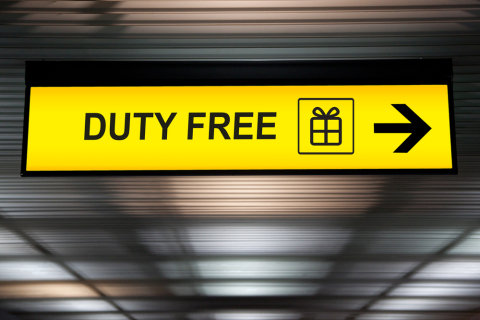Advertisements

Customs Duty. Picture Credit: Canva
The UK government has announced significant increases in Air Passenger Duty (APD) as part of the autumn Budget, introducing new costs for travelers and sharply higher rates for private jet users. The changes, outlined by Chancellor Rachel Reeves on 30 October, aim to align APD with inflation while targeting luxury travel for greater taxation. Here’s a comprehensive breakdown of what you need to know about the upcoming changes.
What is Air Passenger Duty (APD)?
APD is a tax levied on passengers flying from most UK airports, introduced in 1994 to offset the environmental impact of air travel. The amount varies depending on the flight’s destination, travel class, and the type of aircraft.- Economy Class (seats under 40 inches of pitch) incurs a reduced rate.
- Premium Cabins and larger private jets pay significantly higher rates.
- APD applies to passengers aged 16 or over on most commercial flights and those aged two or older on private jets.
Current APD Rates (valid until 31 March 2025)
- Domestic Flights: £7 (reduced), £14 (standard), £78 (higher)
- Band A (0-2,000 miles, e.g., Europe): £13 (reduced), £26 (standard), £78 (higher)
- Band B (2,001-5,500 miles, e.g., Egypt): £88 (reduced), £194 (standard), £581 (higher)
- Band C (over 5,500 miles, e.g., Australia): £92 (reduced), £202 (standard), £607 (higher)
Future Changes to APD Rates
From 1 April 2025- Domestic Flights: £7 (reduced), £14 (standard), £84 (higher)
- Band A: £13 (reduced), £28 (standard), £84 (higher)
- Band B: £90 (reduced), £216 (standard), £647 (higher)
- Band C: £94 (reduced), £224 (standard), £673 (higher)
- Economy tickets for short-haul international flights will see a £2 increase.
- Example: APD for short-haul flights to Europe rises to £15.
- Domestic Flights: £8 (reduced), £16 (standard), £142 (higher)
- Band A: £15 (reduced), £32 (standard), £142 (higher)
- Band B: £102 (reduced), £244 (standard), £1,097 (higher)
- Band C: £106 (reduced), £253 (standard), £1,141 (higher)
Impact on Private Jets
Private jet travelers face the steepest increases. By April 2026, the cost for private jet passengers on long-haul routes will rise to £1,141, nearly double the current rate of £607. This reflects the government’s intention to target high-emission luxury travel more aggressively.Implications for Budget Travellers
While the £2 rise for economy class on short-haul flights might seem minor, budget airlines like Ryanair and easyJet could face pressure. Ryanair’s CEO, Michael O’Leary, has already expressed concerns, warning that increased APD could lead to reduced customer demand and cuts in flight capacity.For example, on a £20 fare to Europe, the APD alone will account for £15 from 2026, significantly narrowing airlines’ profit margins.
Why is APD Increasing?
Chancellor Reeves stated that APD had failed to keep up with inflation in recent years. The adjustments aim to correct this while ensuring wealthier travelers and high-emission aircraft contribute more to public finances.What’s Next?
The new legislation will be introduced in the Finance Bill 2024-25 to formalise the changes. As airlines often pass APD costs directly to customers, passengers should anticipate higher airfares in the years ahead.Budget-conscious travelers may need to seek deals and book early to mitigate rising costs. Stay tuned to our website for tips on navigating these changes and finding affordable travel options in the evolving landscape.










